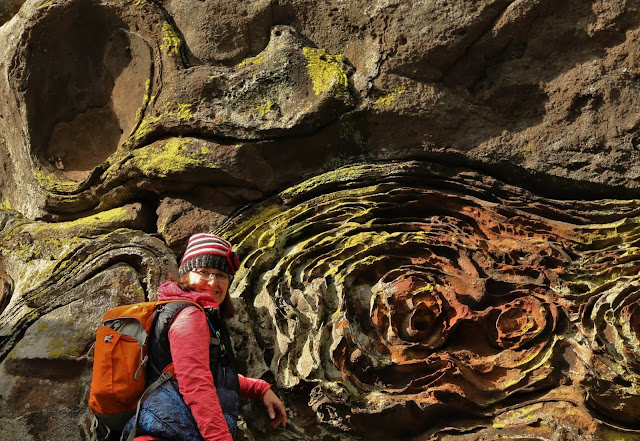On Saturday I drove up to Milwaukee to waste a few hours in the Third Ward and when I saw the signs on the highway for the Basilica of St. Josaphat I pulled over for a quick look.
I've seen the Basilica's dome from the highway before and knew I'd get there someday. Ground was broken in 1896 and the Basilica was completed in 1901, its design based on the Vatican Basilica of St. Peter in Rome and named after an Archbishop of Poland from the early 1600s.
There's an interesting story about this building: it was built from salvaged materials of the U.S. Post Office and Custom House in Chicago. The building was being razed and it was purchased for $20,000, the pieces loaded on 500 railroad flatcars for their trip to Milwaukee. There were interesting displays in the basement related to the history of the Basilica, including a doorknob from the old building I would have loved to take home!
The Basilica is the largest church in Milwaukee and in 1929 was the third church to have been given Basilica status in the United States. My favorite items were the angels holding the basins of Holy Water.
In general visiting churches is not high on my agenda, but this one was chock full of history and interesting artifacts.
 |
| 23k gold leaf on the baldachino (canopy) on the High Altar |
A Roman artist named Gonippo Raggi was hired in 1926 to paint the oil murals, ornamental plasterwork and also the faux marble walls and columns.
 |
| above the High Altar |
There was so much going on in the Inner Dome I wouldn't even know where to begin.
The stained glass windows were imported from Innsbruck, Austria. From the outside you'd never know what images they contained. They reminded me of childhood, making me think I must have spent some time staring at them during mass in our Naval wanderings across the U.S. and Canada.
I didn't find any information on the crosses atop the building, but a closer look reveals not just their beautiful form but lightning rods as well!
Moving down the highway I headed for the
Third Ward which suffered a tragic fire on October 28, 1892. The fire started in the Water Street Union Oil & Paint Co. Strong winds of up to 50 mph helped to spread the fire to the Ward's other buildings. Cities such as Chicago and Oshkosh helped Milwaukee's fire department fight the flames by sending horse-drawn units by rail. 440 buildings were destroyed and more than 1,900 people, mostly Irish families, were left without homes by the time the fire was finally under control at midnight. (source, Wikipedia)
After the fire the Irish moved out and the Italians moved in, and the neighborhood was filled with warehouses, saloons and factories. Today those buildings are filled with restaurants and specialty shops, the district a hip place to gather. We joined the hip and had lunch at
Milwaukee Public Market where you can wander around like at the mall food court except the food is much better.
We ate our chicken and dumpling soup from the Soup Market while seated above C. Adams Bakery, smelling baking cookies and listening to live guitar music while people watching. Of course on the way out I had to buy a cupcake from C. Adams, and then a loaf of bread at Breadsmith, a chicken pot pie at Gehring Market, and the best hommus I've ever had at PitaWorks.
If coffee's your thing there is a Collectivo across the street, complete with funky mural. There are worse ways to spend a Saturday afternoon in winter than shopping for yummy treats while admiring murals and architecture, right? Linking up to
Monday Mural.



















































